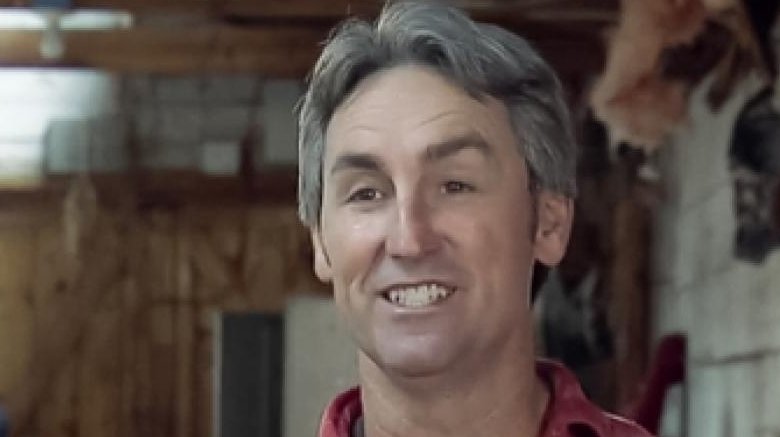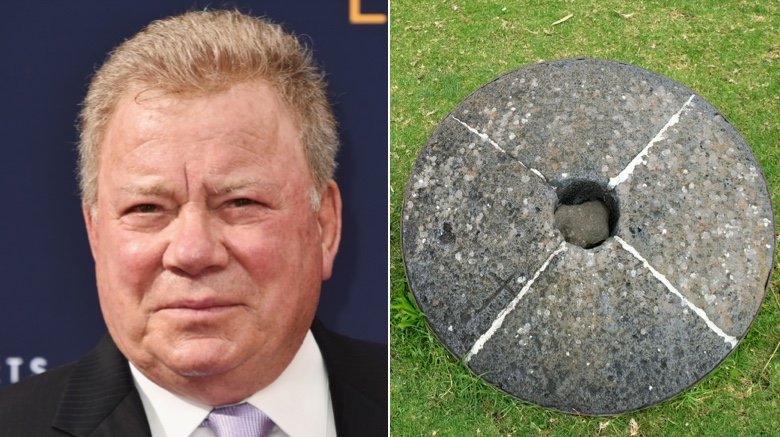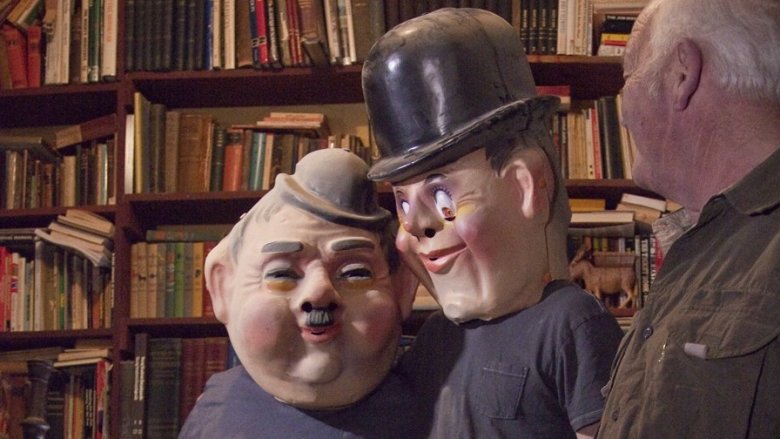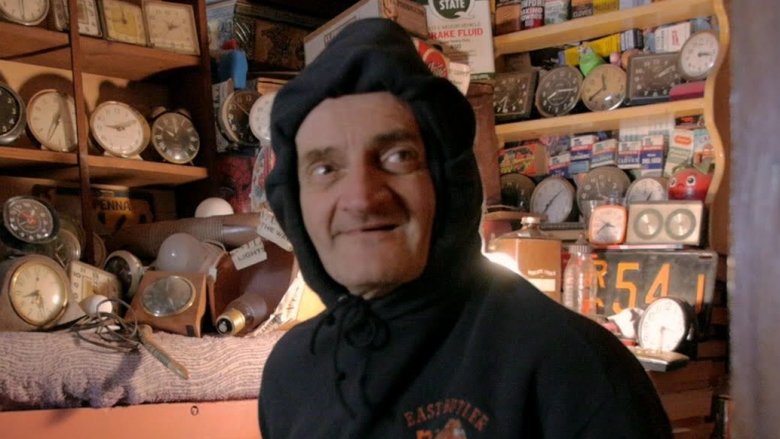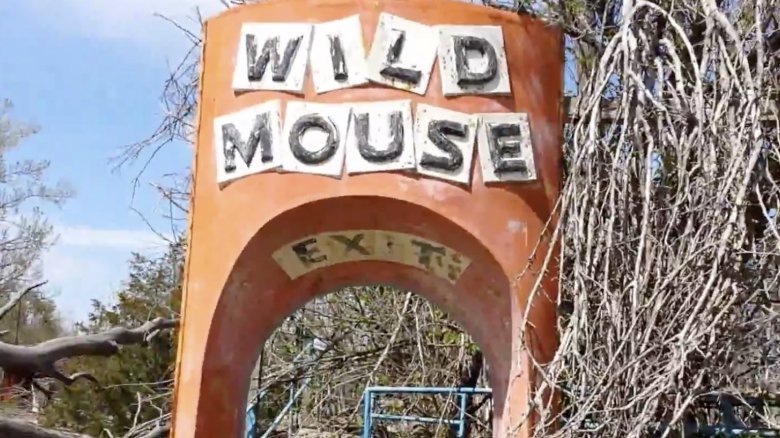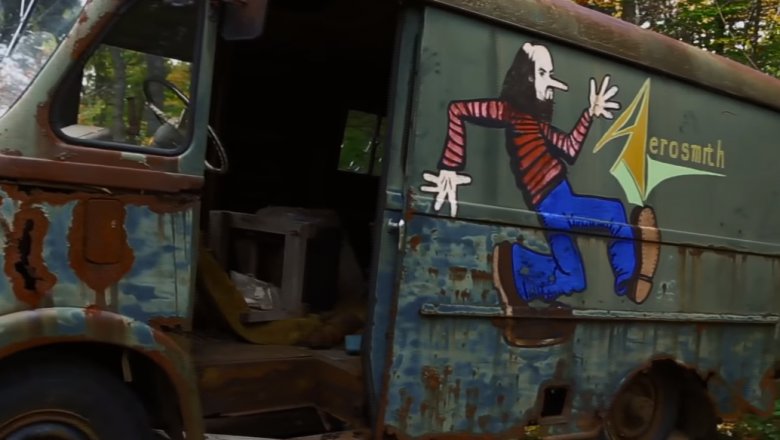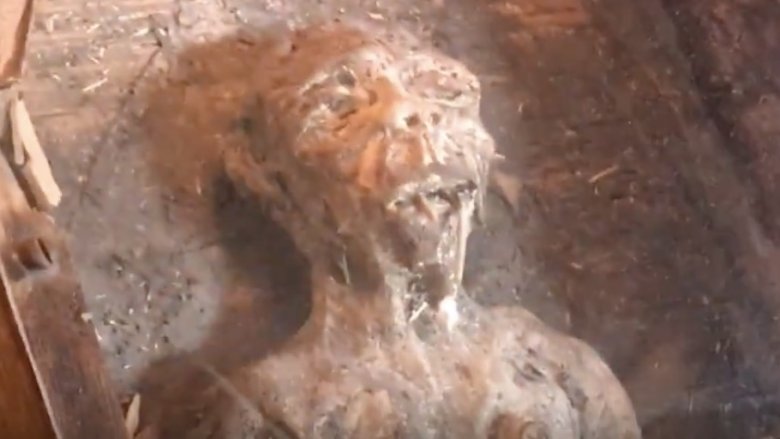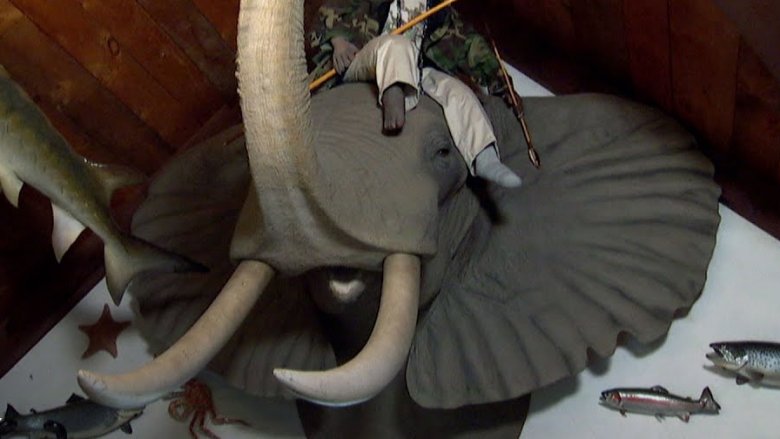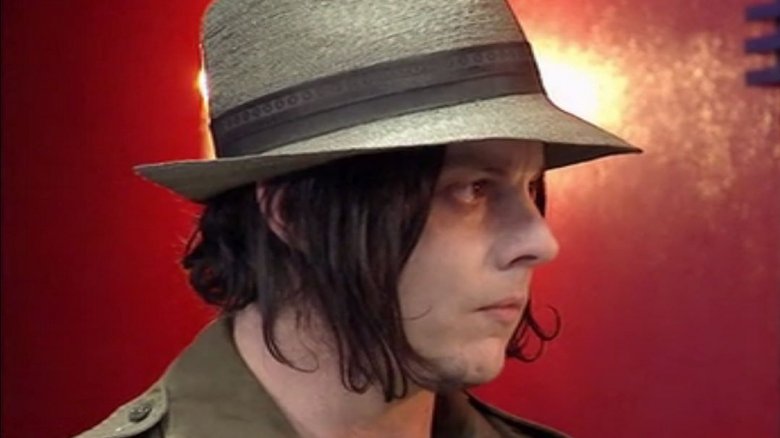The Most Bizarre Moments In American Pickers History
Mike Wolfe and Frank Fritz have grown famous by being the best at what might outrank baseball as the national pastime: bargain hunting. These old friends star on American Pickers, the History Channel series that finds the pair hitting the road in search of valuable treasures hiding in the barns, garages, basements, and abandoned buildings throughout America's many dusty roads and old highways.
Wolfe and Fritz have their specialties, the things that they're always very excited to find. For Wolfe, it's old cars and motorcycles, and for Fritz it's toys (among other priceless objects). But both have a working knowledge of what pretty much anything old might be worth, and it's this pursuit of a living that takes them to some very spooky and unexpected places. Every now and then, Wolfe and Fritz find the scent of a one-of-a-kind antique and chase it to a place that's dark, strange, or even dangerous. Here are some times when American Pickers found treasures... but also weirdness.
Millstones: the final frontier
Mike Wolfe and Frank Fritz generally do business in a certain way: They follow leads on some good collections, travel to that person's property to pick, buy some stuff, then take it back to their store (or an auction) and sell it at a tidy profit. But once in a blue moon, somebody calls Antique Archaeology to preemptively hire Wolfe and Fritz to find them a particular antique — which is what happened on a season three episode from 2011, with a client who just so happened to be the legendary William Shatner.
When Captain Kirk from Star Trek makes an order, you take it. He'd contacted the shop and spoke with Danielle Colby, who passed along the message to Wolfe and Fritz that Denny Crane from Boston Legal wanted, nay needed, an antique millstone for his garden. (The Star Trek star also boldly asked the guys to help him decorate a room in his house.) Sure enough, because they're the best in the business, the Pickers found a millstone, a gigantic tool used to process grain made out of rocks imported from Europe. Hardly a jaded Hollywood big shot, Shatner made the surreal moment even more delicious by breathlessly declaring the mill "fantastic" while dressed in a tight-fitting leather coat with his wife clinging to his arm.
Treasure amidst a very fine mess
In a second-season episode, Mike Wolfe and Frank Fritz took American Pickers deep into Kentucky, and to the home of an older couple named Don and Nannette — and a barn where they'd literally tossed all kinds of junk, from branded signs to old TV sets. (It's the kind of property that probably belongs not on American Pickers, but on a different fascinating reality show about collecting: Hoarders.) Books lined ramshackle bookshelves, and as Wolfe looked around, he somehow noticed a curtain that would otherwise have blended into the wall. Apparently not worried about deadly spiders or ghosts, he boldly just stuck his head through the opening and emerged... different. He came out wearing a very old, oversized, and very grotesque mask of Stan Laurel, the screen comedian who, with Oliver Hardy, made up half of the comedy duo Laurel and Hardy. (References to the pair are a recurring bit on American Pickers — they've found merchandise bearing the actors' images before, and Wolfe and Fritz have compared their appearances to them, as Wolfe is lanky and thin like Laurel, and Fritz is shorter and stockier like Hardy.) But where there's Laurel, there's Hardy... and so there was another, even creepier mask that Fritz put on his head. The masks were crumbling and probably haunted, but the pair bought them anyway.
Moles and holes
There are exactly two ways in which one might acquire the nickname "Mole Man." That guy is either going to be covered in skin tags, or he's going to somehow, and for some reason, live deep underground. The American Pickers have paid multiple visits to the pickers' paradise home of Ron, a.k.a. "The Mole Man." Beneath a typical-looking American Pickers property selection — rural, with several outbuildings filled with intriguing prospects — is Ron's actual home... more than 20 feet beneath, in fact.
In the 2013 episode in which Mike Wolfe and Frank Fritz re-visited Ron's home, it was a cold call, so in order to find the man, they essentially trespassed and attempted to navigate the seemingly endless, cavernous, maze-like tunnels that Ron's been developing since 1965. Watching it feels less like an American Pickers episode and more like a lost Saw film, as the guys squeeze through narrow tunnels, walking on narrow planks past wood, cinder blocks, and junk... until they get to a dead end and have to try another route. Wolfe accurately asserts that the experience is like "Indiana Jones meets Sanford and Son." Toward the end they unwisely hurry through, creeped out as they are, until they reach Ron's door — if they can traverse the single piece of wood over a 20-foot-deep pit.
Somehow this old amusement park wasn't haunted
Perhaps it's because most every old episode of Scooby-Doo is based on one, or perhaps the crumbling bits of prosperous America at its mid-20th century prime are innately depressing, but there's just something about an abandoned amusement park that is both sad and terrifying. In 2013, Mike Wolfe and Frank Fritz re-visited Eagle Park, a long-shuttered ride-filled retreat that Danielle Colby had toured earlier but didn't have time to pick through the remains because she expended all her time and effort hauling away some old bumper cars.
Viewers can almost hear Shaggy imploring Scooby to "like, get out of here man" as they wander around what's left of Eagle Park with Wayne, who worked at the theme park, his family's business, from the age of six on. (He says the park pulled in tons of patrons from 1957 to 1985, when the family shut it down due to skyrocketing insurance rates.) Speaking of insurance, the Pickers must have been glad to have some as they checked out likely tetanus traps like a rickety Ferris wheel, warped and rusted bumper cars, the faded "Rocket Ride," and other collapsed and rotten attractions that once brought joy and happiness.
How Aerosmith traversed the land before it got its wings
On a picking swing through New England in 2018, Mike Wolfe and Frank Fritz visited a lushly wooded property in Chesterfield, Massachusetts. The owner took them to a remote corner of his land and showed them a throughly rusted, falling apart, small vehicle that looked like an ice cream truck, if ice cream trucks were painted green and decorated with a long-nosed cartoon character in a striped shirt doing jazz hands with the word "Aerosmith" written next to it.
The van was easily identifiable as an International Harvester Metro, dating to the mid-1960s, which would make it just used and therefore affordable enough for a Massachusetts band starting out in the early '70s to use for travel between gigs. Could this derelict van actually have belonged to Aerosmith? Mike Wolfe managed to make contact with an early member of Aerosmith who confirmed that yes, this was the band's touring van — but not before exploring this spooky antique rotting away in the woods, lined with Persian rugs, old Budweiser cans, a label-maker produced "Three Dog Night" sticker, and two of the filthiest mattresses that ever existed (try not to imagine Aerosmith getting some use out of those in their salad days).
Wolfe vs. Wolf Boy
Homer Tate is an American original — a pioneer in the uniquely American art form of the "roadside attraction." He specialized in making hideous, macabre "artifacts" out of papier-mâché, mud, and real animal bones. Then he marketed and advertised them — as real finds, not artistic creations — on the U.S. highway system in the 1940s and '50s, getting people to stop and take a gander for a small fee. Tate is probably best known for "The Thing," an Arizona roadside oddity purporting to be a tandem mummified mother and child. He eventually opened Tate's Curiosity Shop to display his wares, and it's full of the kind of stuff the American Pickers are just waiting to come across. Indeed, Wolfe and Fritz came face to face with "Wolf Boy," a Homer Tate original. The story is that it's one of 26 mummies discovered in a cave in Peru, but it's merely an eerie fake made by Tate in the mid-20th century. Wolf Boy is a sight, looking like a combination of E.T. and a turtle, if either creature had fangs.
The elephants in the room
Taxidermy, when done well, can be beautiful and artistic, a way to preserve the grand majesty of nature's creatures for generations to come. On the other hand, some find it savage and ghoulish, killing an animal and then stuffing its body to put on display as a show of man's triumph over nature. No matter what a viewer's opinion on taxidermy, they'd have to admit that a giant building in rural New England in which every square inch is occupied by a dead, posed animal is pretty weird. Mike Wolfe and Frank Fritz visited such an establishment in a 2012 American Pickers episode, and, looking past the usual menagerie of moose and bucks, grew transfixed with two well preserved (and gigantic) elephant heads, one partially real, the other entirely artificial. Wolfe decided he simply had to have the fallen, mounted beast (the one with real skin and trunk but fake tusks) and paid an astounding $9,500 for it.
Fell in love with a head
The taxidermied elephant head story gets weirder. With so much capital tied up in the noggin of the massive elephant purchased from a taxidermy wonderland, the Pickers needed to unload that thing as quickly as possible, and for as much money as possible. They tasked Danielle Colby back at the shop with finding a buyer, and she located one in rock star Jack White. He was the frontman for the White Stripes, a guy who loves pachyderms so much he named the band's classic 2003 album Elephant. He really wanted the head, but north of ten grand was too rich even for his blood, so he tried to talk down the price. The Pickers, having sunk such a huge sum of cash into their find, didn't have a lot of wiggle room. Eventually White proposed a deal: He'd get the elephant head at his price if he threw in some American Pickers-worthy bits of old-school Americana, specifically a black-and-white photobooth and a jukebox (the first one he ever owned). "Deal," said the Pickers. Unfortunately, they had to ship that massive item to White's home... which cost them a cool $1,000.
Mike is all right, Fritz is all right, it just seems a little weird
In a season four episode that aired in 2013, Frank Fritz was absolutely thrilled to take American Pickers to Rockford, Illinois. That's famously the home of the great American rock band Cheap Trick, and Fritz — a big fan — was extremely excited to see Rick's Picks, a rock n' roll museum curated by and featuring the assorted musical memorabilia of Cheap Trick guitarist Rick Nielsen.
Known for his boisterous stage personality and sartorial choices (a skeleton-print jumpsuit, baseball caps with bow ties), Fritz and Mike Wolfe stared in awe at Nielsen's huge collection, which encompassed that skeleton suit along with a number of the musician's famous novelty guitars, including a check-patterned instrument and one with five necks. Nielsen invited the Pickers to his warehouse to see even more of his stuff, and the guys dropped about $2,500 on some albums, a poster, T-shirts, and traveling cases. But they really wanted to take home one of Nielsen's guitars. They haggled for a while, but the "Surrender" guy just wouldn't surrender his piece. None of this is particularly strange, but then, finally, he let Fritz and Wolfe have it... for free, on the condition that they keep it on display at Antique Archaeology — and he reserves the right to come in and play it if he's ever in town.
